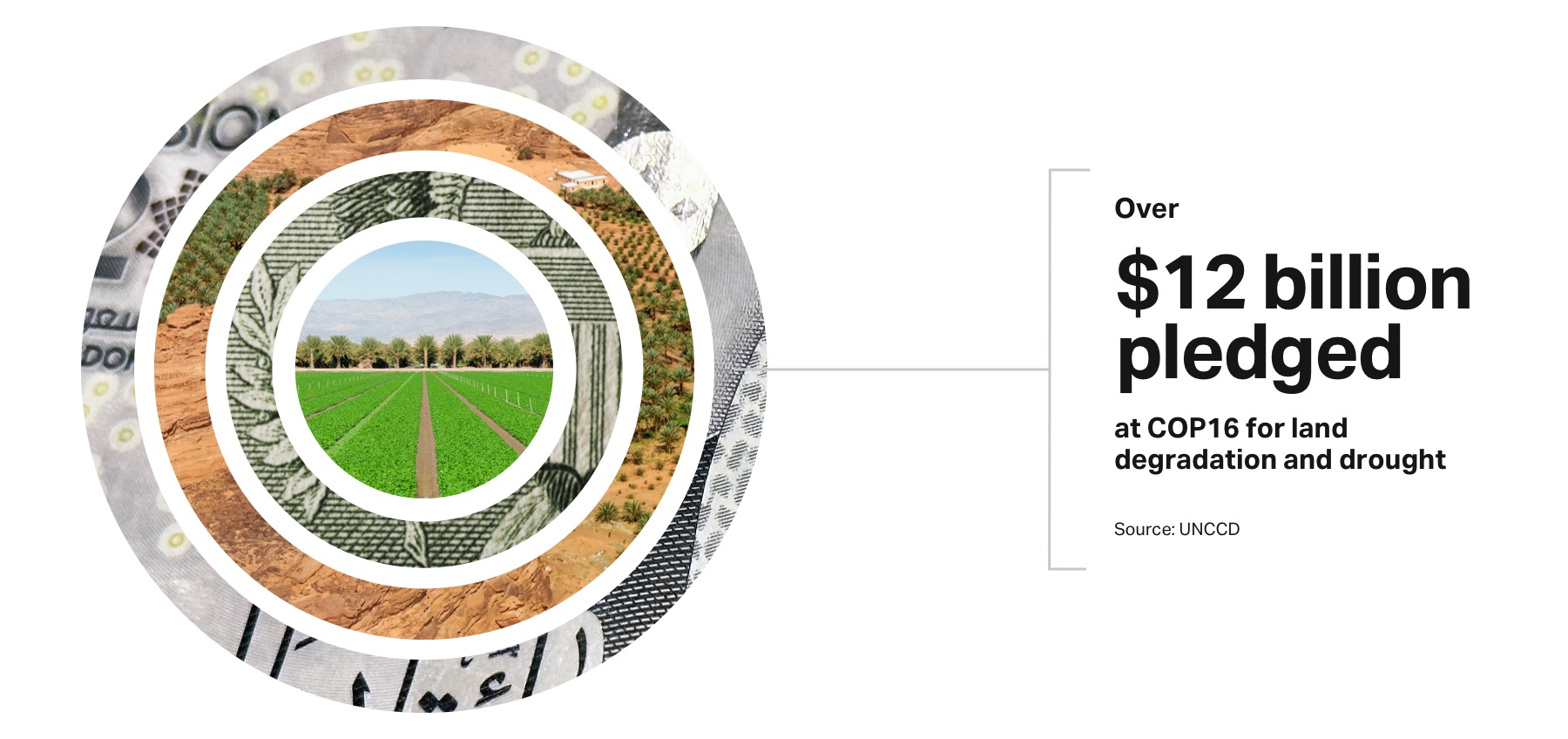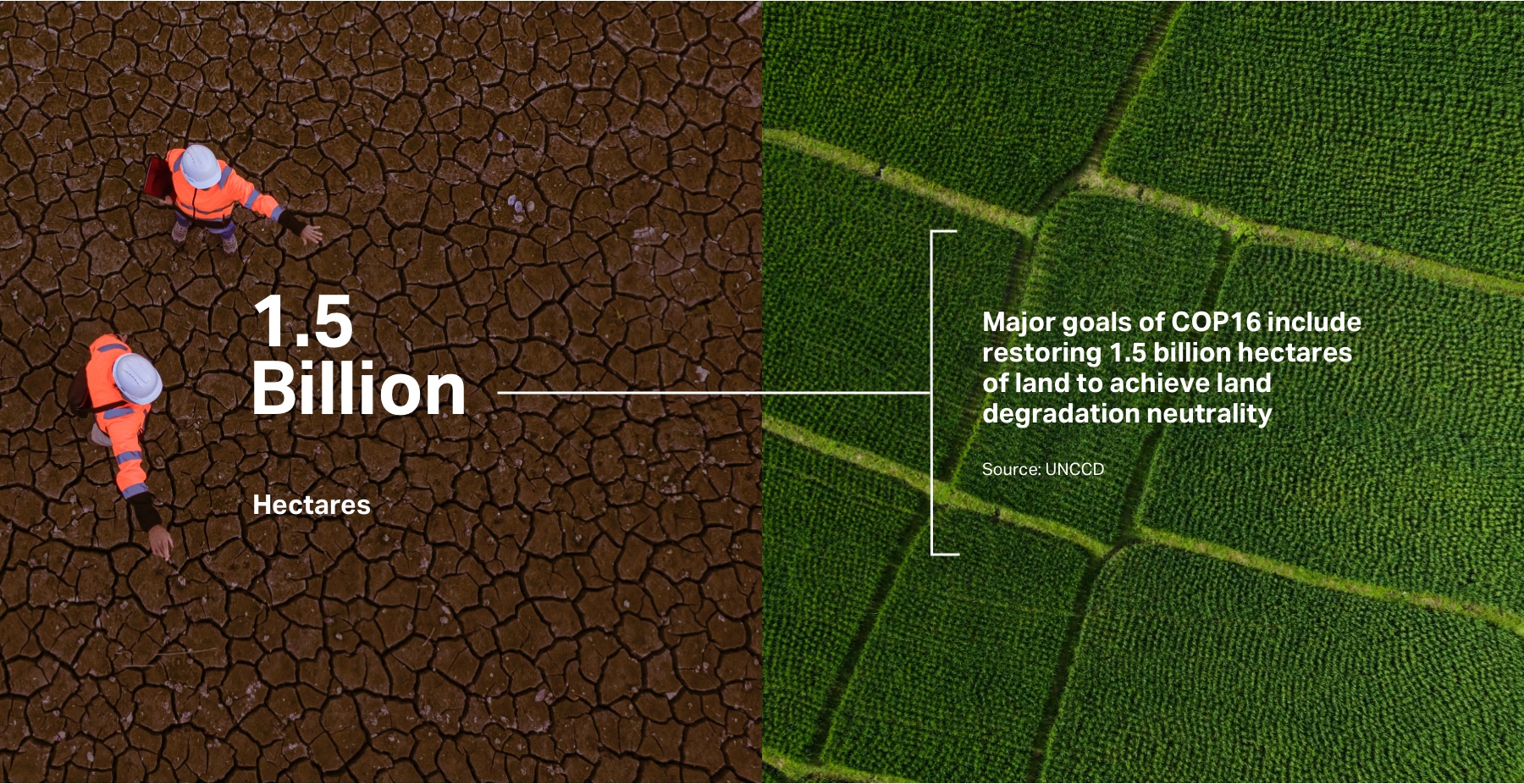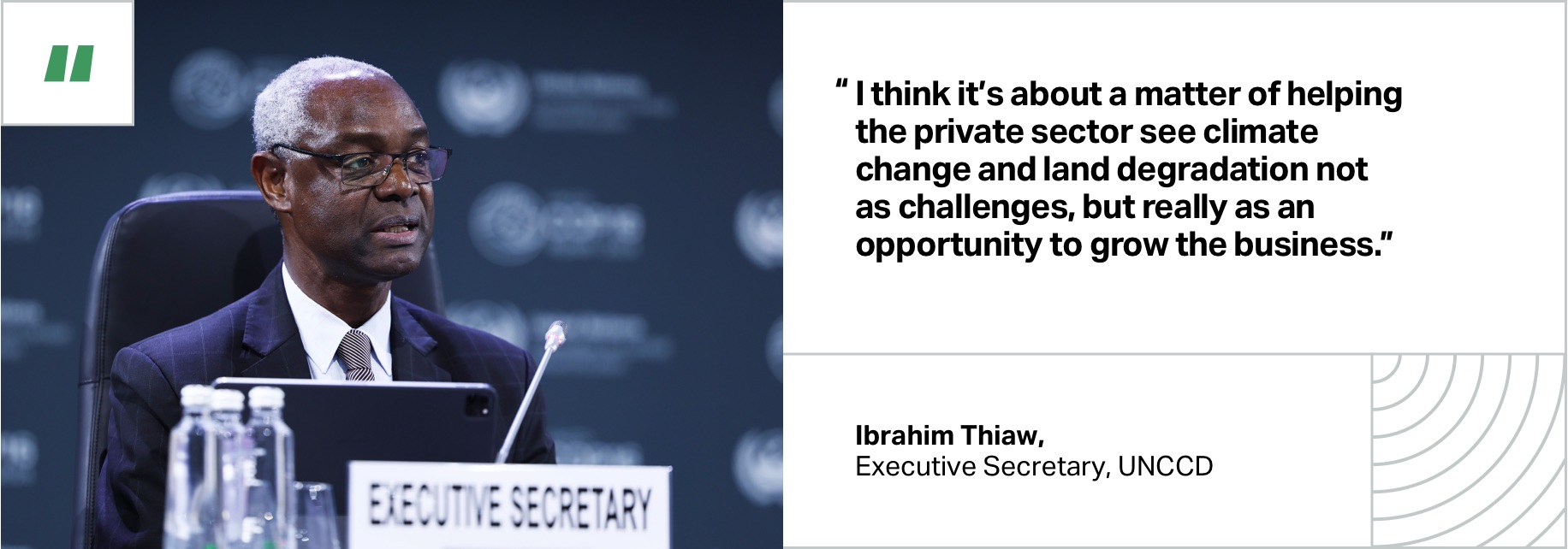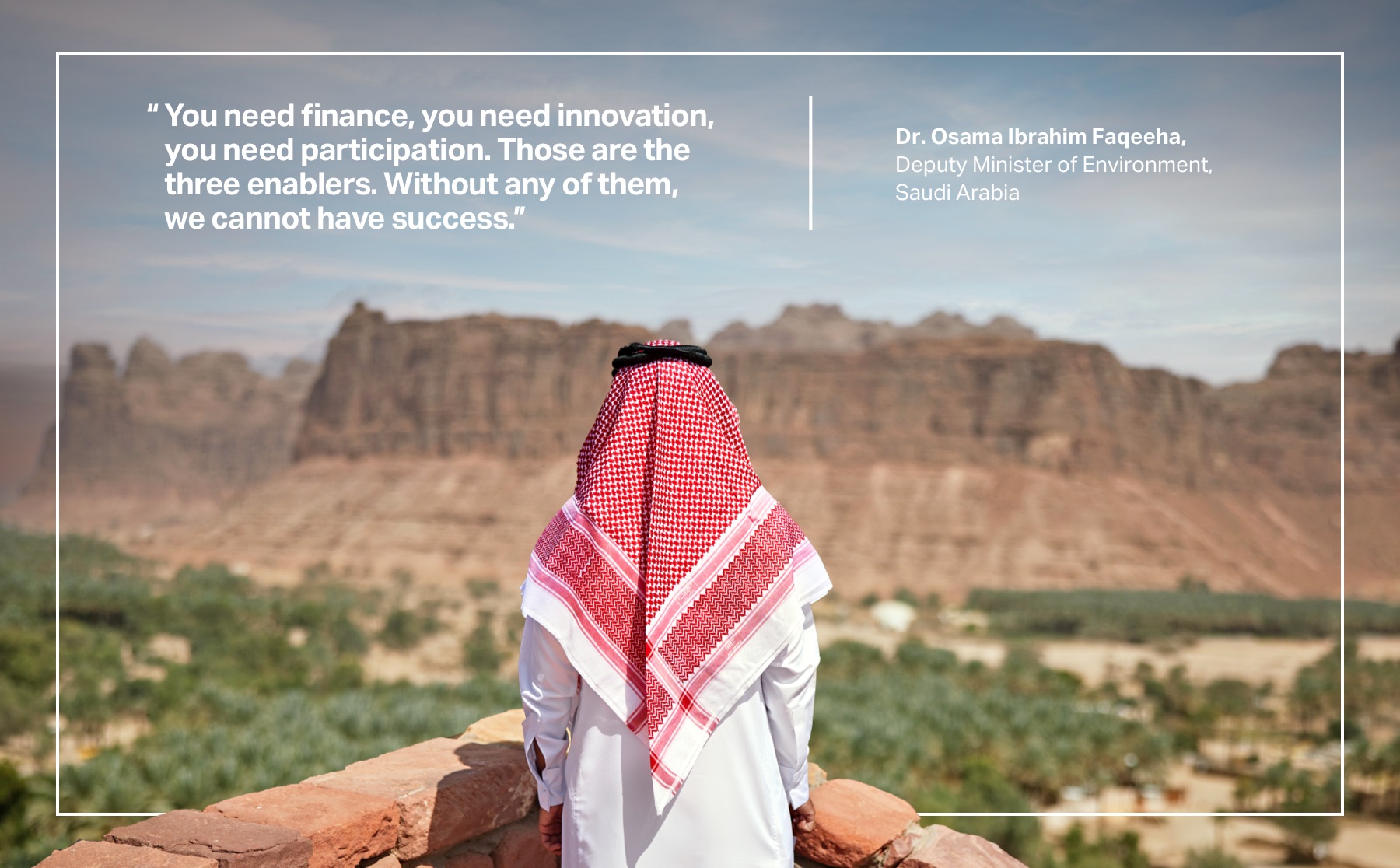COP16 Riyadh: Investment in Land Degradation & Drought Solutions Takes Center Stage
Dr. Faqeeha points out the crucial importance of taking tailored action on land degradation and financing agrifood innovation.
The urgency of land degradation was heard loud and clear at COP16 in Riyadh, as representatives from over 197 member countries attended the 16th Session of the United Nations Convention to Combat Desertification (UNCCD) in the Saudi capital on December 2–13.
Land degradation has wide-ranging impacts on migration, agriculture, food security, price stability and the world’s biggest industries. Half of the world’s GDP—$44 trillion—depends directly or indirectly on healthy land and ecosystems.
Major goals of COP16 included identifying and scaling pathways to rehabilitate 1.5 billion hectares of land by 2030 - an important pillar of the Riyadh Action Agenda - and strengthening drought resilience in the world’s most vulnerable countries.
Established by the COP16 Presidency, the Riyadh Action Agenda acts as a global framework for practical action, prioritizing innovation, technology, investment and cross sector collaboration as core to achieving land restoration, drought management and sustainability goals. In doing so, it ensures that momentum and accountability extend well beyond the event.
At the landmark event, 39 major decisions were announced to advance land restoration and build drought resilience, providing guidance to both the public and the private sectors.
“COP16 in Riyadh has been a historic turning point for land, heightening global awareness of land degradation, desertification and drought,” said Dr. Osama Faqeeha, Saudi Arabia’s Deputy Minister of Environment and Advisor to the COP16 Presidency in a statement.

Funding and Finance at COP16 Riyadh
Development banks and national governments were behind the major COP16 financing announcements to deliver on key UNCCD goals. The Arab Coordination Group committed $10 billion toward land restoration and drought resilience projects, while the OPEC Fund for International Development and the Islamic Development Bank pledged $1 billion each.
The Vision for Adapted Crops and Soils, led by the United States and its partners, received $70 million in funding, while Italy and Australia pledged to increase financial backing for the Africa Great Green Wall project – an initiative to restore 100 million hectares of land across the continent.
According to a statement by the UNCCD, direct financing of the UNCCD Secretariat’s budget also increased by 8%, a first in over a decade – signalling the impact of COP16, and the global recognition of land degradation as an urgent priority.
Healthy Business Needs Healthy Land
Business 4 Land (B4L), an initiative led by the UNCCD to engage businesses in land degradation solutions, reported its largest private-sector attendance at a UNCCD COP event to date.
The private sector currently contributes just 6% of the funding necessary to rehabilitate damaged land, and B4L’s mission at COP16 was to increase private investment in land degradation neutrality—where land is restored at the same or faster rate than it is degraded.

“The economic growth that we have sustained over the last 100 years, 150 years has deteriorated so much of our land that our quality of life is deteriorating. Suddenly, we will realize that we cannot eat growth, we cannot eat money, we cannot eat gold,” said Ibrahim Thiaw, Executive Secretary of the UNCCD.
Data from the World Bank shows that investments in sustainable land management can yield returns between $7 and $30 for every dollar invested. Yet many investors continue to see land regeneration investments as high-risk and unprofitable. At COP16, solutions such as green bonds, carbon credits and blended finance were highlighted as ways to manage risk.
Green financing company, Mirova, demonstrated how a mix of public and private investment from the Land Degradation Neutrality Fund (LDN Fund) has helped regenerate lands in Africa, Asia and Latin America. Showcasing projects that deliver both positive environmental and economic impacts is crucial in helping to close the $2.1 trillion restoration funding shortfall.

Thiaw believes that it’s critical for the private sector to identify the difficulties they’re facing and the opportunities in land restoration, so that businesses and the public sector can collaborate on solutions on a global level.
Innovative Solutions & International Drought Management
Alongside discussions on finance and policy, COP16 also highlighted real-world initiatives that are making a tangible difference.
The Caucus for Indigenous Peoples and the Caucus for Local Communities was created as a platform for local communities impacted by land degradation, while the Declaration of Parties committed to combat sand and dust storms.

One major focus at the event was to scale innovative solutions to manage drought – which currently affects 1.8 billion people worldwide. According to the World Bank, every dollar invested in drought resilience can save governments between $5 and $10 in drought response costs.
The Saudi government launched the Riyadh Global Drought Resilience Partnership, which aims to help 80 of the world’s most vulnerable countries adapt to drought. By promoting education on drought-resistant crops, implementing early warning systems, offering drought insurance and cultivating drought-tolerant livestock, the initiative will empower communities to shift from reactive to proactive drought responses.
The partnership is aligned with a growing number of international and regional land restoration initiatives, such as the Middle East Green Initiative and the Riyadh Action Agenda, which was launched during the event.
As the event came to a close, Faqeeha emphasized the need for a collective and holistic approach to regenerating land. The Davos Summit, in January 2025, will be pivotal in sustaining the momentum of global initiatives on land degradation, desertification and drought.
“We are heading in the right direction, and we need to keep the momentum going, ” said Faqeeha.
